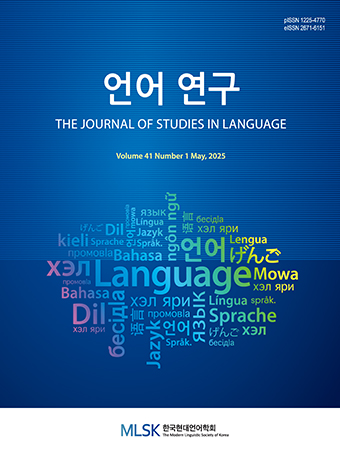Research Article
Abstract
References
Information
The purpose of this study is to investigate the different types of politeness strategies that are used between the different participants based on the theory of politeness strategy put forward by Brown and Levinson(1987), in relation to U.S. Presidential debates. A televised debate from the 2016 American Presidential Election was chosen for the data analysis. A total of 918 thought units were analyzed, and the results showed that positive politeness strategies were used most by both participants. In the case of Clinton, the positive politeness strategies were used overwhelmingly. However, bald on record was the second most highly used and the difference between the first and second was a small margin in the utterance of Trump. In the negative strategies, questions and hedges were used most in both candidates. In off record strategies, both candidates frequently used overstate. As politically damaging information towards both candidates was revealed before the debate, the debaters performed face threatening acts primarily to attack the positive public image of their opponent.
- 곽면선. 2018. 영국 브렉시트(Brexit) 토론에 나타난 영어 공손전략. 『언어연구』 34, 8-28.
- 곽면선 ‧ 이상철. 2015. 미국 대선 토론에 나타난 영어 화용론적 체면전략. 『한국현대영어영문학』 59, 21-44.
- 범기수. 2011. 2010년 영국 총선 3당 당수 TV 토론의 진행형식 및 내용분석. 『스피치와 커뮤니케이션』 16, 143-187.
- 이은희. 2014. 시사 토론에서의 체면 전략 실현 양상. 『한중인문학연구』 42, 67-87.
- Benoit, W. L. and W. T. Wells. 1996. Candidates in Conflict: Persuasive Attack and Defense in the 1992 Presidential Debates. Tuscaloosa, AL: University of Alabama Press.
- Brown, P. and S. C. Levinson. 1978. Universals in Language Usage: Politeness Phenomena. In E. Goody (ed.), Questions and Politeness: Strategies in Social Interaction. Cambridge: Cambridge University Press, 56-310.
- Brown, P. and S. C. Levinson. 1987. Politeness: Some universals in language usage. Cambridge: Cambridge University Press. 10.1017/CBO9780511813085
- Carlin, D., E. Morris, and S. Smith. 2001. The Influence of Format and Questions on Candidates’ Strategies Argument Choices in the 2000 Presidential Debates. American Behavioral Scientist 44, 2196-2118. 10.1177/00027640121958276
- Cupach, W. R. and S. Metts. 1994. Face-work. Thousand Oaks, CA: Sage. 10.4135/9781483326986
- Goffman, E. 1967. Interaction Ritual: Essays on Face-to-face Behavior. New York: Anchor Books.
- Hatfield, J. D. and D. Weider-Hatfield. 1978. The Comparative Utility of Three Types of Behavioral Units for Interaction Analysis. Communication Monographs 45, 44-50. 10.1080/03637757809375950
- Hinck. E. A. and S. S. Hinck. 2002. Politeness Strategies in the 1992 Vice Presidential and Presidential Debates. Argumentation and Advocacy 38, 234-250. 10.1080/00028533.2002.11821570
- Morris, E. R. 2004. A Clash Strategy Analysis of Contemporary General Election Presidential Debates. Unpublished doctoral dissertation, University of Kansas-Lawrence.
- 중앙일보 2016월 11월 6일. https://news.joins.com/article/20827590
- The Washington Post October 8th 2016. https://www.washingtonpost.com/
- The New York Times October 10th, 2016. http://www.nytimes.com
- Publisher :The Modern Linguistic Society of Korea
- Publisher(Ko) :한국현대언어학회
- Journal Title :The Journal of Studies in Language
- Journal Title(Ko) :언어연구
- Volume : 35
- No :4
- Pages :485-502
- DOI :https://doi.org/10.18627/jslg.35.4.202002.485




 The Journal of Studies in Language
The Journal of Studies in Language






